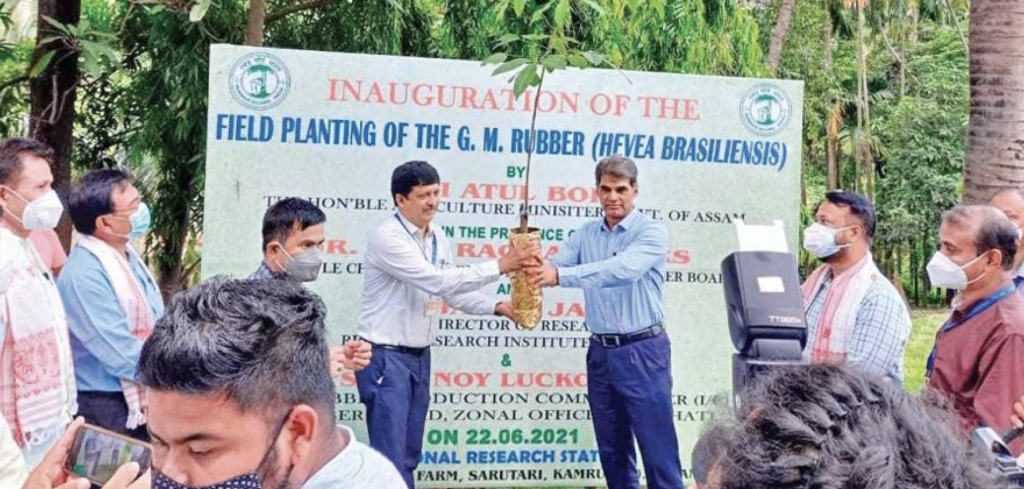The India Rubber Board’s research farm in Saturi, near Guwahati, India, has planted the world’s first genetically modified (GM) rubber plant, tailored specifically for the climate found in the region.
Developed at the Rubber Research Institute of India (RRII) in Kottayam, Kerala, the GM rubber plant is said to contain additional copies of the MnSOD (manganese-containing superoxide dismutase) gene, which has been inserted into the plant to help it survive the extremely cold northeast Indian winter, which is a major challenge for young rubber plants.
A planting ceremony was held with a small number of Rubber Board officials, soil conservation department officials and local rubber growers in attendance. K N Raghavan, chairman and executive director of the Rubber Board, spoke at the ceremony and explained that the RRII’s biotechnology laboratory had developed two high-yielding hybrid clones of rubber, capable of resisting the extreme cold.
“Growth of young rubber plants remains suspended during the winter months, which are also characterized by progressive drying of the soil,” he explained. “This is the reason for the long immaturity period of this crop in the region.”
The MnSOD gene gives plants the ability to protect themselves from environmental stresses, like a harsh, cold winter or a lack of water during a drought. RRII laboratory studies concluded that GM rubber plants overexpressed the MnSOD gene, which gave the cells some protection. Through the research, the Rubber Board predicts that the GM plant will thrive in the region.
When managing concerns about the GM plants, Raghavan explained that planting had been done at an experimental level and followed all the mandatory biosafety measures necessary when conducting field trials of GM crops. The Rubber Board further assured parties that GM rubber genes would not spread to other native species.



